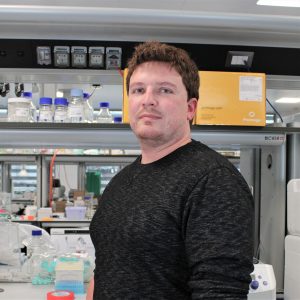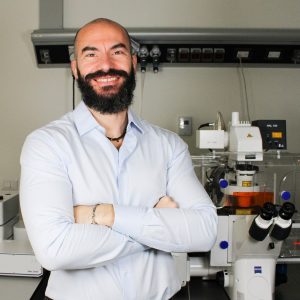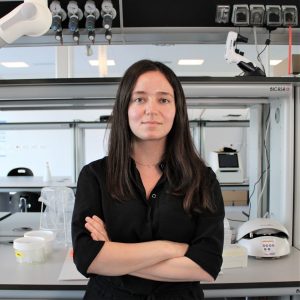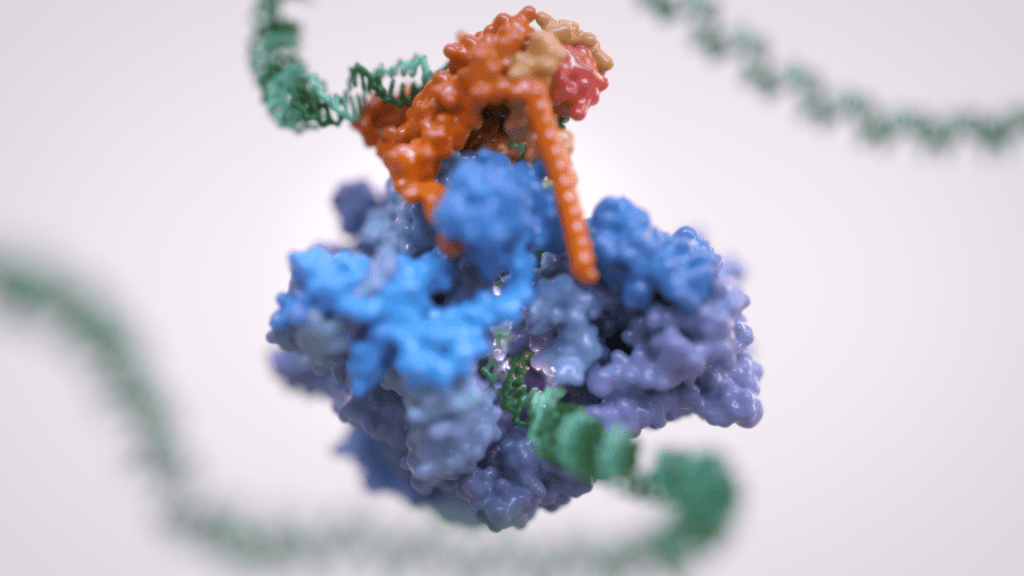
Vannini Group
Gene transcription is the first step that controls the expression of the genetic information encoded in a genome and ultimately underlies cell differentiation and organism development. Eukaryotic gene transcription occurs in the context of highly structured and organised genomes and acts as a coordinator of numerous events co-occurring in the nucleus. Eukaryotic transcription relies on three different RNA polymerases: RNA polymerase I (Pol I) transcribes ribosomal RNA, RNA polymerase II (Pol II) synthesizes messenger RNAs and RNA polymerase III (Pol III) produces short and non-translated RNAs, including the entire pool of tRNAs, which are essential for cell growth.
For a long time, it was assumed that only Pol II was regulated whereas Pol I and Pol III did not require such control. However, it is now clear that RNA polymerase III transcription is tightly regulated and a determinant of organismal growth. Pol III deregulation is observed in many forms of cancer and Pol III genetic mutations cause severe neurodegenerative diseases.
Furthermore, Pol III and its associated factors play a paramount role into genome structure and organisation. These “extra-transcriptional roles” are carried out throughout interactions with other cellular components such as retroelement transposition machineries, Structural Maintenance of Chromosome (SMC) complexes and specific chromatin remodellers.
The Vannini Group employs an Integrative Structural Biology approach, combining cutting-edge cryo-EM analysis, x-ray diffraction data, cross-linking and native mass-spectrometry. We integrate the structural data with molecular and cellular biology techniques in order to obtain a comprehensive view of these fundamental processes and how their mis-regulation can lead to cancer and neurodegenerative diseases.
Group members
-
 Alessandro Vannini
Alessandro Vannini
Head of Structural Biology Research Centre -
 Alessandro Borsellini
Alessandro Borsellini
Postdoc -
 Giacomo Ettore Casale
Giacomo Ettore Casale
Postdoc -
 Valentina Cecatiello
Valentina Cecatiello
Senior Technician -
 Sebastian Chamera
Sebastian Chamera
Postdoc -
 Fabiola Iommazzo
Fabiola Iommazzo
PhD Student -
 Thomas Noé Perry
Thomas Noé Perry
Postdoc -
 Fabio Pessina
Fabio Pessina
Senior Technician -
 Mariavittoria Pizzinga
Mariavittoria Pizzinga
Postdoc -
 Ewan Ramsay
Ewan Ramsay
Senior Staff Scientist -
 Ankit Roy
Ankit Roy
PhD Student -
 Syed Zawar Shah
Syed Zawar Shah
PhD Student
Publications
-
04/2018 - Biochim Biophys Acta Gene Regul Mech
Structural rearrangements of the RNA polymerase III machinery during tRNA transcription initiation
RNA polymerase III catalyses the synthesis of tRNAs in eukaryotic organisms. Through combined biochemical and structural characterisation, multiple auxiliary factors have been identified alongside RNA Polymerase III as critical in both facilitating and regulating transcription. Together, this machinery forms dynamic multi-protein complexes at tRNA genes which are required for polymerase recruitment, DNA opening and initiation […]
-
01/2018 - Nature
Structural basis of RNA polymerase III transcription initiation
RNA polymerase (Pol) III transcribes essential non-coding RNAs, including the entire pool of transfer RNAs, the 5S ribosomal RNA and the U6 spliceosomal RNA, and is often deregulated in cancer cells. The initiation of gene transcription by Pol III requires the activity of the transcription factor TFIIIB to form a transcriptionally active Pol III preinitiation […]
-
08/2017 - Transcription
New tricks for an old dog: Brf2-dependent RNA Polymerase III transcription in oxidative stress and cancer
Here, we discuss the role of Brf2, an RNA Polymerase III core transcription factor, as a master switch of the oxidative stress response. We highlight the interplay of Brf2 with the Nrf2/Keap1 pathway, as well as the role of Brf2 in cancer and other possible regulations.
-
08/2017 - EMBO J
RNA polymerase I, bending the rules?
Transcription initiation is one of the key regulatory steps in expressing the genetic information encoded in the DNA. Mechanisms of RNA Pol II transcription have been extensively studied, whereas the structural basis of RNA Pol I and III transcription is still poorly defined. Three recent studies discussed here give a first glimpse into the molecular mechanisms underlying the process of RNA Pol I transcriptional initiation and […]
-
07/2017 - Nature Communications
Molecular mechanisms of Bdp1 in TFIIIB assembly and RNA polymerase III transcription initiation
Initiation of gene transcription by RNA polymerase (Pol) III requires the activity of TFIIIB, a complex formed by Brf1 (or Brf2), TBP (TATA-binding protein), and Bdp1. TFIIIB is required for recruitment of Pol III and to promote the transition from a closed to an open Pol III pre-initiation complex, a process dependent on the activity […]
